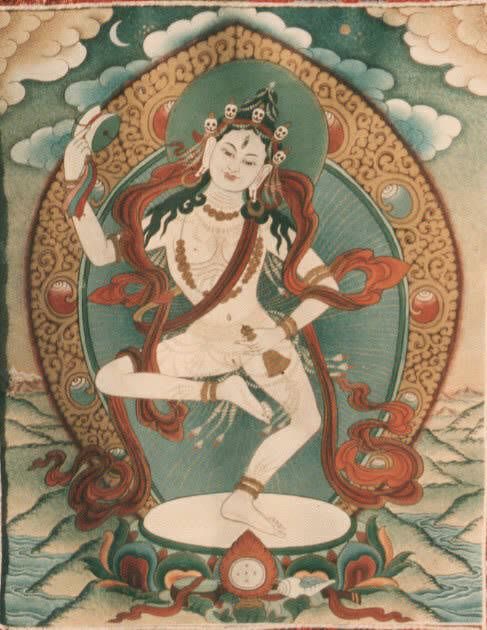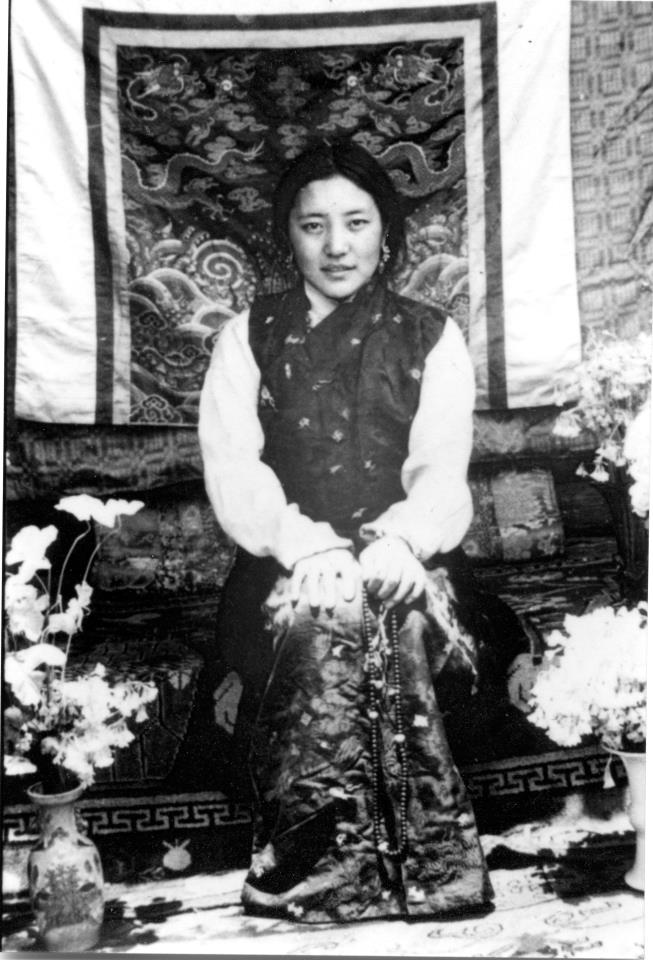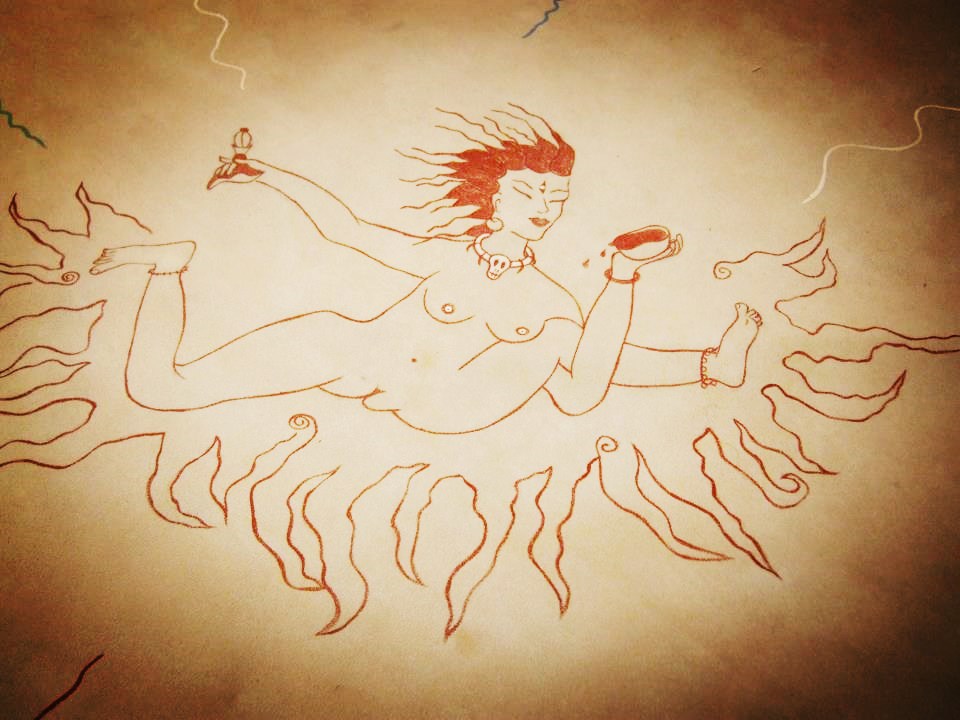
Morena Luciani Russo was introduced to the Dakinis by Vicki Noble, in 2007.
Dakini is a term from Sanskrit related to Tibetan Khandro, meaning “woman who flies” or “woman who moves in space”. The Dakinis have reached us through Tibetan Tantric Buddhism. They represent manifold icons of female freedom, each one of them incarnating the mind of the universe “in action”. Each Dakini is a messenger of wisdom capable of destroying our little schemes, and liberating us from the tensions that suffocate our existence. Some of them are divinities, others take shape in human female bodies in order to free the creatures lost in the confusion of life in this world.
According to Vicki Noble, the powerful, independent and spiritually lofty image which the Dakini offers us as a model of inspiration for women would seem to date back well beyond Tantrism. This vision of the Dakini is based upon research conducted by archeologist Jeannine Davis-Kimball on the Amazon priestesses of the Silk Road, and on studies regarding Ancient Europe (1).
Encountering the Dakini in our time remains a precious experience, allowing us to connect to an active and flaming female energy, and go beyond the passive and comforting image of womanhood imposed by patriarchy. Furthermore, studies by Lama Tsultrim Allione allow an historical approach to this tradition of spiritual research conducted by women who actually lived within the framework of Tibetan Buddhism, leaving traces and paradigms that still remain valid for those women of today who wish to reclaim and assess their lost spirituality.

Morena Luciani Russo, once every year, passes on the Pratice of the 5 Dakini as elaborated by Vicki Noble, who defines it as:
A Mandala to bring health and integrity, a Shaman “recovery of the soul”, through which we retrieve the parts and bits of us we may have lost, due to distraction, dispersion, laziness, anxiety, anger, negative meddling, or violation.
Consult our agenda for forthcoming events.

(1) Further Reading: Noble V., La Dea Doppia, Venexia 2005, Davis Kimball J., Donne Guerriere. Le Sciamane della Via della Seta, Venexia 2009